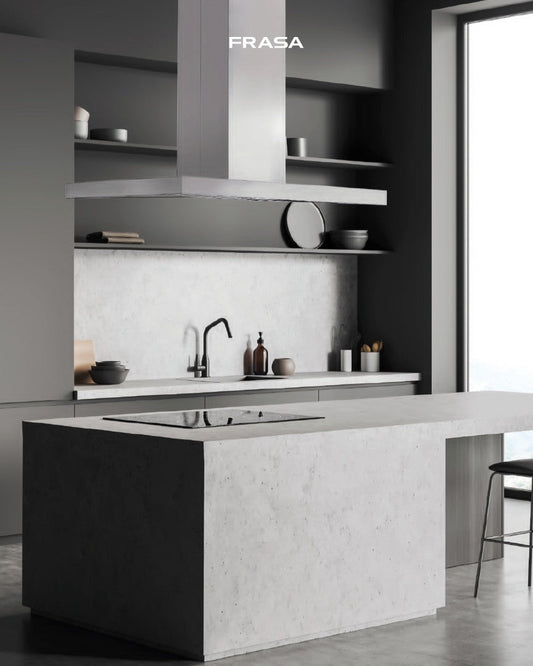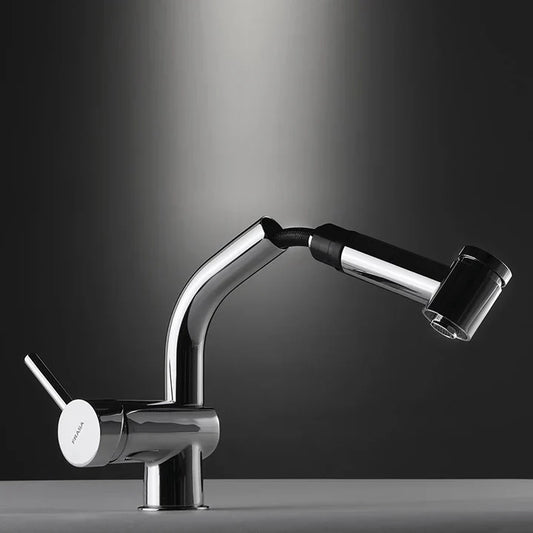We have 5 tips to help you choose . Keep your kitchen fresh.
Before purchasing, consider the type and design of the hood, dimensions, power, air circulation and functions.
1. TYPE OF HOOD
Our range includes range hoods, wall, island, ceiling, corner and countertop hoods.
It's a classic that continues to offer a wide variety of features. It installs under a kitchen unit, directly above the stovetop.
Integrate Exhaust Fan
This range hood is built into the kitchen cabinets. It's discreet and a good choice for small spaces.
Wall Chimney
It's a traditional yet elegant model. Whether T-shaped, pyramid-shaped, or vertical, this chimney mounts on the kitchen wall.
It is the equipment with the largest number of sizes, materials and designs.
Ceiling Chimney
This model, as its name suggests, is installed on the ceiling, immediately above the plate.
It's perfect for kitchens with large islands, as it can be controlled remotely.
Island Chimney
Suspended from the ceiling, this model is interesting for those who care about design and aesthetics.
As it is very large, it is intended for large kitchens.
Corner Chimney
This chimney is ideal for free-standing installation, without furniture, giving a modern and innovative look to the kitchen.
A great solution for kitchens with a stove located in the corner
Bench Chimney
It's installed so it's hidden in the countertop behind the cooking area when not in use. At the push of a button, it rises to extract moisture, odors, and grease.
It is ideal for minimalist kitchens or islands.
2. DIMENSIONS
3. POWER
- Measure the height, width and length of the kitchen, in meters
- Apply the following calculation to find the volume: Height x width x length = volume (m3)
- To find out the minimum extraction power: volume x 6 = m3/h minimum
- To know the maximum extraction power: volume x 12 = m3/h maximum
4. AIR CIRCULATION
If your kitchen doesn't have a duct, or if it's far from an outside vent, you should choose a range hood that recirculates air.
In this case, the exhaust fan renews the air through activated carbon filters. These filters clean the air of smoke and odors, returning it to the kitchen pleasantly fresh.
5. FUNCTIONS
- Intensive power
- Lighting
- Grease/Charcoal Filters - Grease filters should be replaced after 15-100 hours, while activated carbon filters should be washed or replaced after 4 months.
- Noise level - choose an extractor fan with a low decibel (dB) rating
Explore our exhaust range . From traditional extractor fans to modern chimneys, we have models to suit all tastes and needs.





